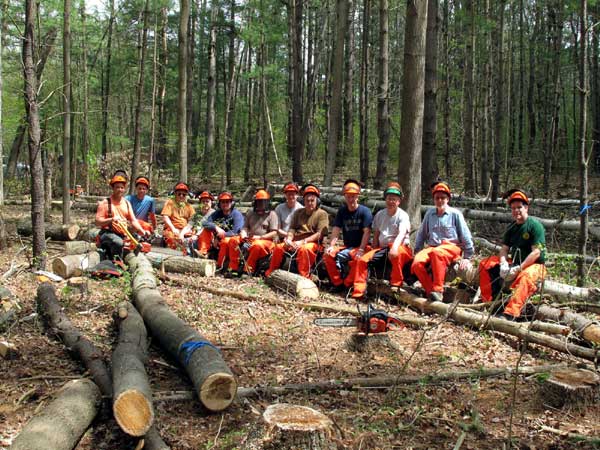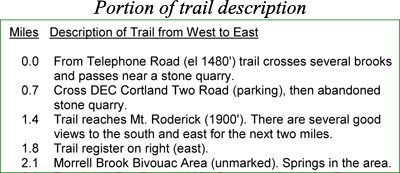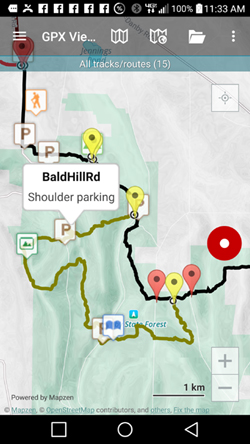While common courtesy and common sense will serve you well on the Trail, here are some specific suggestions to consider.
Drinking water
All water along the Trail System must be treated in some manner to make it safe for drinking. Acceptable methods include boiling for 5 minutes, using water-purification tablets, or filtration. Because the parasite Giardia lamblia is found in many backwoods water supplies, it is especially important to treat all water even if you drank it before with no problems. There is some question as to the effectiveness of water-purification tablets and some filters to kill or remove Giardia cysts—be sure to read and follow the manufacturer’s instructions carefully.
Be careful not to contaminate any water supplies by washing yourself or your equipment, or by disposing of human waste in or near sources of water.
Pets
Dogs are often welcome hiking companions. The FLTC has developed a policy to help you understand your responsibilities if you choose to hike with a pet: Policy for Dogs on the Trails of the FLT System. For organized hikes, check with the hike leader in advance to see if your dog is welcome on the hike.
Ticks and rabid animals
Ticks carrying Lyme disease bacteria and rabid raccoons and other animals are now found near much of the FLT System. Watch for ticks on your skin, and for raccoons, skunks, or other animals that act strangely or show no fear of humans. Use insect repellent containing DEET and stay away from wildlife. If bitten, seek medical attention immediately. Read The Westward Spread of Lyme Disease in New York, an article about Lyme Disease that appeared in the Spring 2009 FLT News.
Noxious plants
There are several noxious plants that you might encounter when hiking the FLT. In addition to the sites mentioned below, www.dot.ny.gov/dangerous-plants has excellent information on all of these plants.
Poison ivy – Poison ivy grows throughout much of North America, so it may be found along the FLT. It can be recognized by its leaves which occur in groups of three. The left and right leaves often have a notch along one edge and are usually mirror images of each other; the middle leaf is usually symmetrical.
Poison ivy also grows as a vine that can climb trees. The vine can be recognized by the aerial rootlets or “hairs” clinging to the tree. Mature vines can have horizontal branches that are large enough to be mistaken for branches of the tree.
Don’t touch it–poison ivy contains an oil called urushiol, a skin irritant that causes an itching rash in most people. If you should step in poison ivy and get the oil on your boots or boot laces, touching them later can transfer the oil to your skin, even after several years. The old saying, “Leaves of three–let them be” is good to remember, but there is even more of the oil in the vine and its rootlets, so don’t touch them either.
Wikipedia has more information on poison ivy. www.poison-ivy.org is also an excellent source of information.
Poison oak – Poison oak is usually found in the southeastern United States, so it should be rare along the FLT. However, it also has three leaves, so if you avoid all plants with three leaves, you’ll be fine.
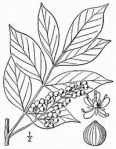
Poison sumac – Poison sumac is another plant that produces urushiol. It has 7-13 leaflets per leaf, usually 2-4 inches long, whose stems are always red. Its leaves are more rounded than those of the benign Staghorn sumac. The plant grows as a shrub or small tree up to 20 feet in height. It is found in some parts of New York, but grows exclusively in very wet or flooded soils, usually in peat bogs and swamps. Nevertheless, you should learn to recognize it because it is far more virulent than poison ivy or poison oak. Some botanists say that poison sumac is the most toxic native plant species in the United States. Wikipedia has more information.

Giant hogweed – Giant hogweed produces a sap that can cause phytophotodermatitis–a severe skin inflammation when the skin is exposed to sunlight. Initially the skin turns red and itches, and within 48 hours blisters form. Scars from the blisters can last for several years, and hospitalization may be required. Even tiny amounts of sap in the eyes can cause permanent blindness. Unlike poison ivy, this plant causes a chemical reaction rather than an allergic reaction, so almost everyone needs to be careful of it.
Giant hogweed is tall, reaching six feet or more in height. It has a stout, dark reddish-purple stem that may be as much as three inches in diameter. In late spring to mid summer, the plant has an umbrella-shaped cluster of flowers up to three feet in diameter at its top. If you get the sap on you, wash immediately with soap and water and protect the exposed skin from sun for several days. For more information, see Wikipedia. If you do see giant hogweed near the trail, please contact the Service Center and report the location.
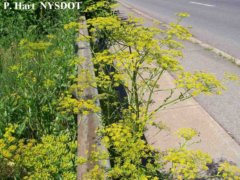
Wild parsnip – This is another plant that sensitizes the skin to sunlight when its leaves or sap are touched. Unlike poison ivy, this plant causes a chemical reaction rather than an allergic reaction, so almost everyone needs to be careful of it. The painful rash it causes can leave scars that persist for several months or longer. Commonly found along roadsides and in pastures and fields, the plant stands 2-5 feet tall and its alternating leaves have sawtoothed edges. The stem is hollow and deeply grooved. The plant is most irritating when it flowers from June through September; the flowers are yellow with 5 petals and are arranged in a flat-topped broad cluster of stalks 2-6 inches across.
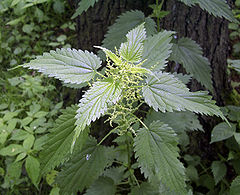
Stinging nettle – This plant has defensive hairs on its stems and leaves. Touching them, even lightly, can produce an intense burning and itching sensation that can last anywhere from a few minutes to a half hour. If you come into contact with stinging nettle, the best (but hardest) remedy is to ignore the itching until it goes away–scratching only prolongs the irritation. The juice from a jewelweed plant (see below) will often ease the itching.
Stinging nettles grow from 3 to 7 feet tall and their leaves are from 1 to 6 inches long with serrated edges. It has small, greenish or brownish flowers, and is found in forests and along the edges of forest, as well as long roadsides.

Jewelweed – This plant is your friend! Often found growing near stinging nettles, the juice from jewelweed stems contains a chemical that temporarily relieves the itching caused by contact with stinging nettles. It is also claimed by some to relieve symptoms of bee stings, insect bites, and poison ivy rashes.
The plants grow from one to a few feet tall, the flowers can be orange or yellow, and the leaves often have serrated edges. The stalks of the plant are plump, soft, and easily crushed. Break the stalks and squeeze them near the broken ends and apply the juice to the area that is itching. You should feel an immediate improvement. Reapply as needed.
Human waste disposal
Outhouses are located at many lean-tos and should be used when available. Otherwise, dig a 4- to 6-inch deep hole, 200 feet or more from the campsite and any water sources. Cover completely with dirt after use.
Food storage and waste disposal
Since you will probably not be using any foods requiring refrigeration, the biggest concern will be animals at night. Remove all food and items with odors from your pack and tent and put them in a “bear bag.” Suspend this bag with rope from a tree branch at least 4 feet from the trunk and 12 feet above the ground.
If you have a campfire, dispose of leftover food by burning it. Otherwise, carry out food waste with you in a plastic garbage bag. Burning cans in the campfire can eliminate food residue and odors, but always remove any unburned material, such as cans, aluminum foil, glass, and bottle caps, from the campfire and carry them out.
Campfires
Use only dead and down wood for campfires. Be sure that you do not leave any fire unattended and when you leave the campsite be sure the fire is totally out. If possible, use water to drown the fire. Place your hand near ashes to be sure they are cold. Be careful of fires near tents. If a fire ring is available, use it. Clear the area around your campfire site of flammable materials.
Cooking
Use a trail stove for cooking. Suitable firewood is often in short supply around campsites and lean-tos. Do not cook or prepare food in lean-tos. Spilled food attracts animals who come later and chew the wood. It is very dangerous to use a stove in a tent and to cook in such close quarters.
General trail etiquette
Respect the rights of landowners. Stay on the Trail, don’t take shortcuts or walk on crops. Do not camp or build fires except at locations designated as campsites on the FLTC map. If a landowner asks you not to use the Trail to cross their property, please comply and report the situation to the FLTC Service Center.
Respect the rights of other trail users. This is particularly true when you are sharing campsites, picnic sites, etc.
Be aware that landowners may give permission to family and friends to use bicycles, ATVs, or horses on the portion of the FLT on their private land, even though such use is not permitted to the general public. Please be sensitive if you choose to remind someone about this when you are not sure whether they have permission.
Take out what you brought in. Clean up the Trail and your campsite, and leave it better than you found it. Take only pictures and leave only footprints. If you bring a pet, keep it under control and bury its waste to protect water supplies. Do not disturb plants or animals.
Law enforcement
This document contains the County Sheriff Office phone numbers for all NY FLT counties: New York Counties- Sheriff Department Phone numbers. You’ll be happy to have it in the unlikely event of a problem.

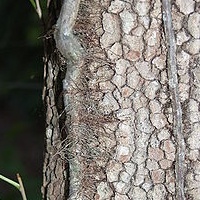
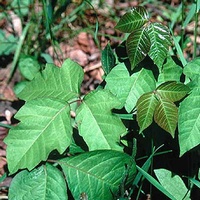
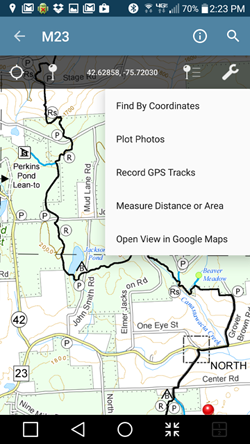


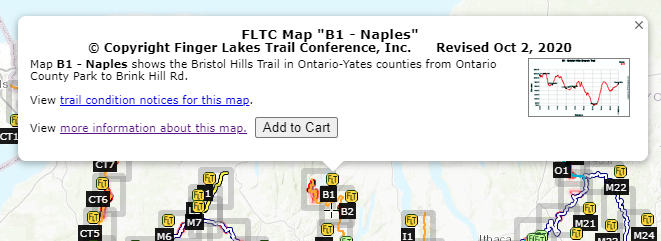


 This is an overview map of the Finger Lakes Trail System. It shows tracks of the main trail, branch trails, loops and spurs. The track colors represent the blaze colors for the branch trails, loops, spurs, and sections of the main FLT not blazed in white. Most of the main FLT is depicted in black & white for better visibility on various map backgrounds, but blazed in white on the ground. Trail closures (hunting, logging, etc.) and recommended bypass routes are depicted as shown at right. Hover over a track to display the name and length. Tracks colored
This is an overview map of the Finger Lakes Trail System. It shows tracks of the main trail, branch trails, loops and spurs. The track colors represent the blaze colors for the branch trails, loops, spurs, and sections of the main FLT not blazed in white. Most of the main FLT is depicted in black & white for better visibility on various map backgrounds, but blazed in white on the ground. Trail closures (hunting, logging, etc.) and recommended bypass routes are depicted as shown at right. Hover over a track to display the name and length. Tracks colored 
 This is a overview map of the Finger Lakes Trail System. It shows tracks of the main trail, branch trails, loops and spurs. The track colors represent the blaze colors for the branch trails, loops, spurs, and sections of the main FLT not blazed in white. Most of the main FLT is depicted in black & white for better visibility on various map backgrounds, but blazed in white on the ground. Trail closures (hunting, logging, etc.) and recommended bypass routes are depicted as shown at right. Hover over a track to display the name and length. Tracks colored
This is a overview map of the Finger Lakes Trail System. It shows tracks of the main trail, branch trails, loops and spurs. The track colors represent the blaze colors for the branch trails, loops, spurs, and sections of the main FLT not blazed in white. Most of the main FLT is depicted in black & white for better visibility on various map backgrounds, but blazed in white on the ground. Trail closures (hunting, logging, etc.) and recommended bypass routes are depicted as shown at right. Hover over a track to display the name and length. Tracks colored 
